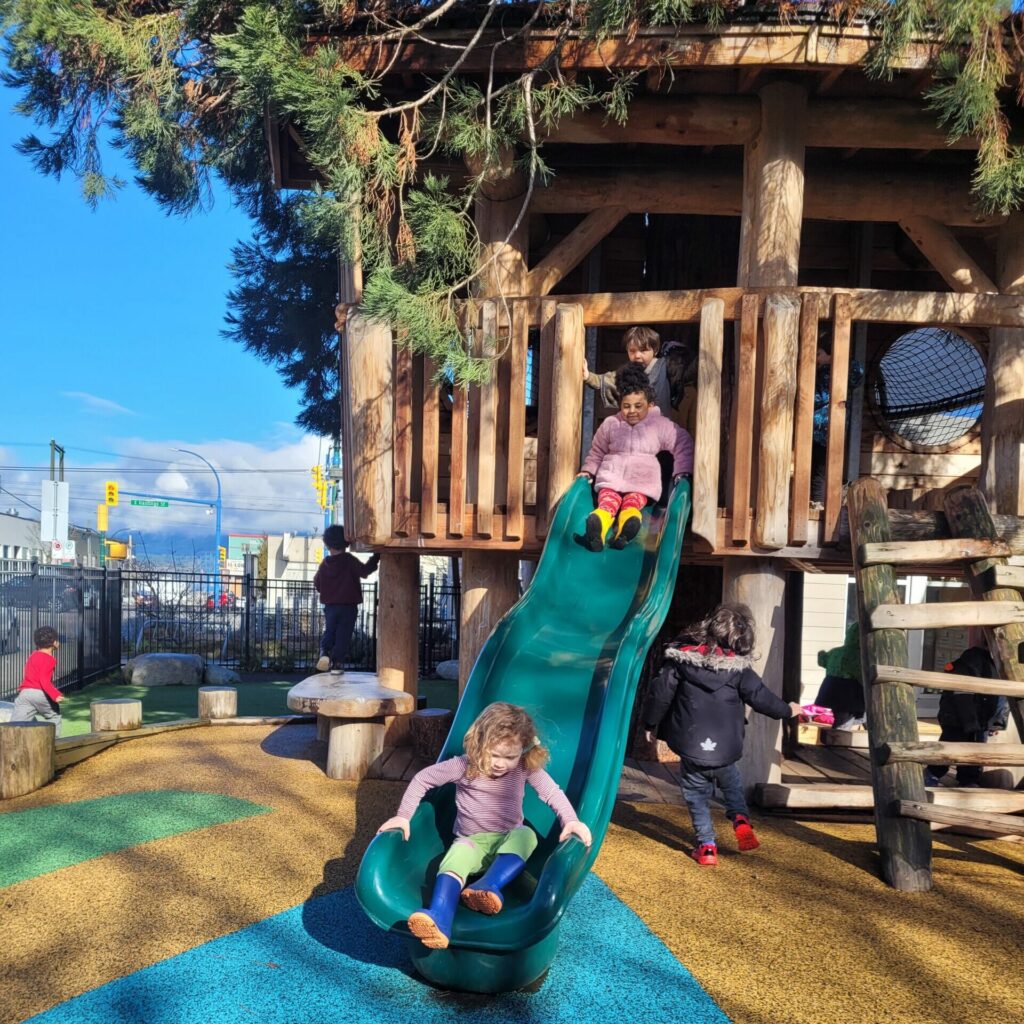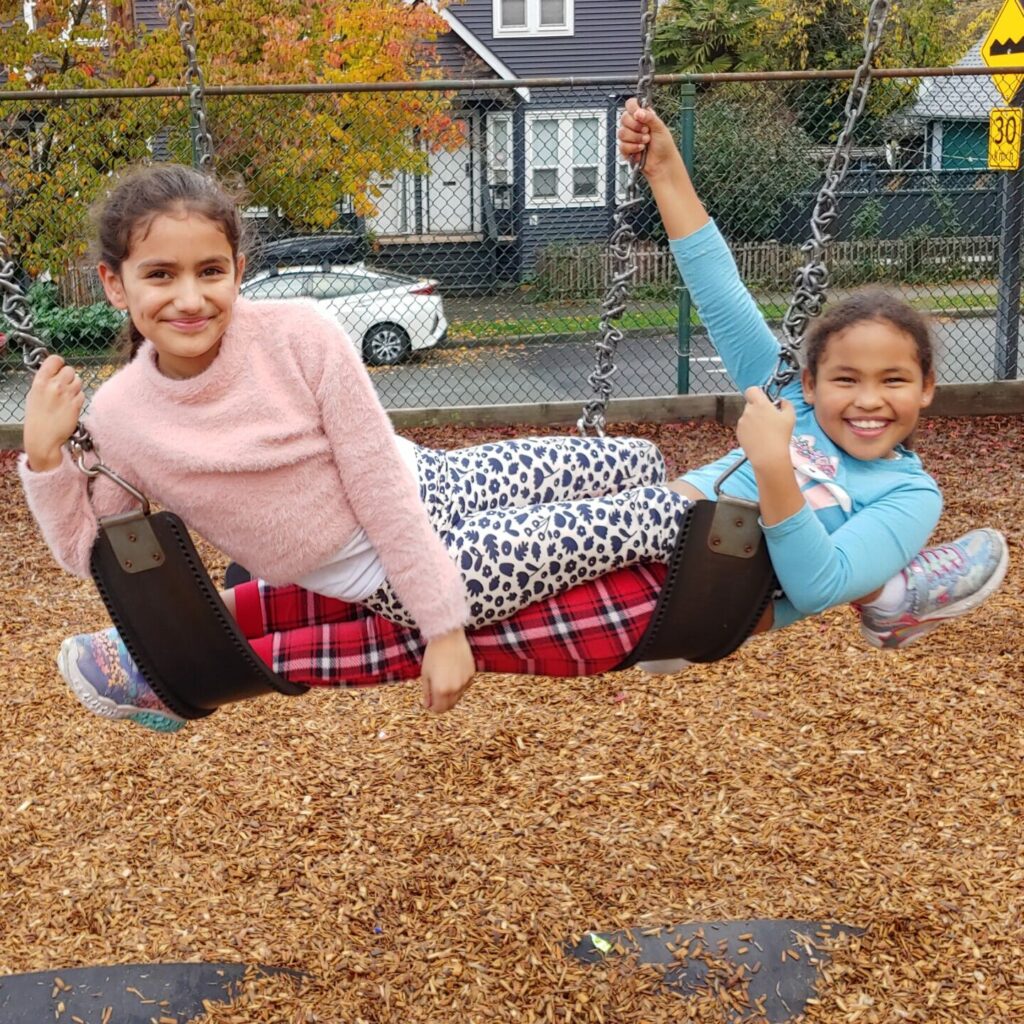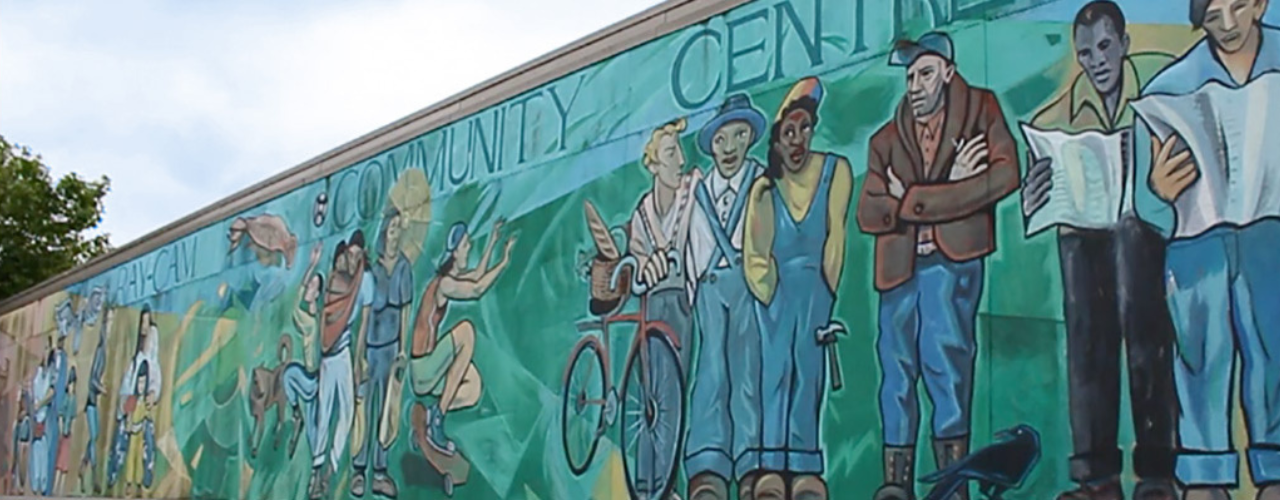From its grassroots community action origins in the 1970’s, RayCam Co-operative Centre has long been a cornerstone for local residents, children, families and seniors in Vancouver’s Downtown Eastside (DTES) and Strathcona neighbourhoods.
RayCam provides family programs, licensed full-day child care and after-school care, community and recreation programming. Recently, the Centre’s board members and community partners were interested in gathering information about the experiences of families with young children in the neighbourhood to inform program development and contribute to the RayCam Renewal project currently in process in partnership with the City of Vancouver.
Understanding the Challenges, Using Data for Planning and Action
With 1 in 3 (32.9%) children in BC arriving in kindergarten vulnerable in one or more areas of development measured by the Early Development Instrument (EDI Wave 8, 2019-2022), it is clear that more needs to be done to support children and families in the province — a particularly pressing concern in Strathcona and the DTES. In the most recent available data, over 60% of kindergarten children in the area were vulnerable on one or more scales of the EDI (Wave 7, 2016-2019). Strathcona is one of a handful of neighbourhoods in the province that have experienced EDI vulnerability rates above 40% across all Waves of EDI data collection over the last 20 years.
As RayCam’s Child Care Analyst Rabia Mir noted, “When the attention about the DTES is all about homelessness, opioid crisis, and street chaos, people can forget that there are children and families living here.”
While EDI data has highlighted concerning trends, there have been calls from the community to focus on strengths rather than vulnerability for solutions. Additionally, common data sources may underrepresent the experiences of children and families from some communities for a variety of reasons such as language, time and technology barriers, and distrust of data and research processes, among others. These issues led to the interest in developing a community-specific survey to better understand local strengths and needs, and a collaboration with the Human Early Learning Partnership (HELP) to conduct a needs assessment.
Building Relationships and Sharing Data
Lisa Ritland, a RayCam volunteer (and PhD candidate researching child care from an equity lens at HELP), was approached and hired to support Child Care Analyst Rabia Mir and Executive Director Kate Hodgson to conduct a community needs assessment process. During this period, RayCam hosted an in-person Health After 2020 research dialogue, bringing researchers and community members together to discuss equity in early childhood post-COVID-19. This event exemplified the reciprocal learning opportunities that arise from strong community-research partnerships.

Developing the Strathcona Early Childhood Needs Assessment
Hodgson, Mir and Ritland engaged HELP faculty and staff in discussions about what information and survey tools might be most useful and appropriate for their assessment process. A decision was made to adapt the Childhood Experiences Questionnaire (CHEQ) to their community context. Ritland worked alongside RayCam staff on this project, engaging parents and caregivers to fill out the survey, analyzing the findings, and sharing the results with community families and partners.
With five decades of experience as a “centre of community”, RayCam’s strong neighourhood relationships were crucial in gathering input from families with young children. Outreach strategies included posters, flyers, information booths, and door-knocking. The survey was available in English, Spanish, and Arabic to accommodate community demographics. Trusting relationships between staff and families facilitated participation, and compensation was provided for their time and knowledge.
Key Findings and Actions
The needs assessment collected 100 survey responses from neighborhood parents and caregivers of children aged 2.5 to five years. The results highlighted the urgent need for investment to address early health inequalities in the community. RayCam has used the findings to develop new programs, inform the RayCam Renewal project, and advocate for increased neighbourhood investment in the early years. Ongoing actions include:
- Increasing access to licensed child care, family literacy programs, and speech therapy
- Enhancing safe outdoor play spaces
- Implementing food supports in child and family programs
- Providing child-centered counseling and play therapy

Recommendations for Government Investment
Alongside local actions, the Summary Report: Strathcona Early Childhood Needs Assessment 2023-24 outlines key recommendations for government investment:
- Inter-sectoral collaboration and action on early childhood development to address the social determinants of health
- A hub funding and service delivery model for families with young children to access information, resources, and supports in one stop from trusted providers.
- Place-based family supports that are designed based on the collective needs and strengths of families living in the Strathcona and DTES neighbourhoods.
- A whole-child approach that understands children’s health and education outcomes as a result of their access to nurturing early environments and experiences
RayCam’s dedication to listening, relationship-building, collaboration and advocacy has been instrumental in supporting children and families in Strathcona and DTES over many decades. By leveraging strong community ties and gathering comprehensive data with the support of HELP, RayCam is, yet again, raising up community voices to highlight gaps and offer solutions to better meet the needs of community children and families.
For more details, read the full report.
